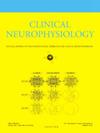应用高密度表面肌电图研究神经肌肉疾病:系统综述
IF 3.6
3区 医学
Q1 CLINICAL NEUROLOGY
引用次数: 0
摘要
目的高密度表面肌电图(HD-sEMG)是研究神经肌肉疾病的一种非侵入性定量工具,可以评估肌肉兴奋、运动单元(MU)特征和放电模式。本系统综述报告了HD-sEMG在神经肌肉疾病方面临床应用的已发表证据,确定了研究的疾病范围、使用的指标以及文献中的空白。方法系统检索PubMed和Scopus检索到200篇研究,其中55篇符合纳入标准。纳入的文章分为前角细胞病变、肌肉病变和周围神经病变。结果常见的研究肌肉包括肱二头肌、胫骨前肌、股外侧肌和鱼际肌。在前角细胞疾病中,HD-sEMG研究了束状电位、MU放电模式和运动神经元的兴奋性。对于周围神经病变,HD-sEMG显示改变的MU募集模式和肌纤维传导速度。在肌肉疾病中,HD-sEMG显示MU传播中断和MU振幅降低。结论我们的系统综述表明,HD-sEMG可以有效区分神经肌肉疾病患者和健康受试者,是一种很有前景的评估神经肌肉疾病的工具。然而,由于缺乏标准化的方案、复杂的数据分析以及对未开发条件的研究有限,HD-sEMG在临床实践中的应用受到阻碍。本文章由计算机程序翻译,如有差异,请以英文原文为准。
Applying high-density surface EMG to the study of neuromuscular disorders: a systematic review
Objective
High-density surface electromyography (HD-sEMG) is a non-invasive and quantitative tool for studying neuromuscular disorders, enabling assessments of muscle excitation, motor unit (MU) characteristics and firing patterns. This systematic review reports the published evidence on the clinical applications of HD-sEMG across neuromuscular disorders, identifying the range of disorders studied, indexes utilized, and gaps in the literature.
Methods
Systematic searches in PubMed and Scopus identified 200 studies, of which 55 met the inclusion criteria. The included articles were grouped into anterior horn cell disorders, muscle disorders and peripheral neuropathies.
Results
Commonly studied muscles included the biceps brachii, tibialis anterior, vastus lateralis and the thenar muscles. In anterior horn cell disorders, HD-sEMG has studied fasciculation potentials, MU firing patterns and motor neuron excitability. For peripheral neuropathies, HD-sEMG revealed altered MU recruitment patterns and muscle fibre conduction velocity. In muscle disorders, HD-sEMG demonstrated disrupted MU propagation and reduced MU amplitudes.
Conclusions
Our systematic review demonstrated that HD-sEMG is a promising tool in assessing neuromuscular disorders as it can effectively distinguish individuals with neuromuscular disorders from healthy subjects.
Significance
However, the adoption of HD-sEMG in clinical practice is hindered by the lack of standardized protocols, complex data analysis and limited research on underexplored conditions.
求助全文
通过发布文献求助,成功后即可免费获取论文全文。
去求助
来源期刊

Clinical Neurophysiology
医学-临床神经学
CiteScore
8.70
自引率
6.40%
发文量
932
审稿时长
59 days
期刊介绍:
As of January 1999, The journal Electroencephalography and Clinical Neurophysiology, and its two sections Electromyography and Motor Control and Evoked Potentials have amalgamated to become this journal - Clinical Neurophysiology.
Clinical Neurophysiology is the official journal of the International Federation of Clinical Neurophysiology, the Brazilian Society of Clinical Neurophysiology, the Czech Society of Clinical Neurophysiology, the Italian Clinical Neurophysiology Society and the International Society of Intraoperative Neurophysiology.The journal is dedicated to fostering research and disseminating information on all aspects of both normal and abnormal functioning of the nervous system. The key aim of the publication is to disseminate scholarly reports on the pathophysiology underlying diseases of the central and peripheral nervous system of human patients. Clinical trials that use neurophysiological measures to document change are encouraged, as are manuscripts reporting data on integrated neuroimaging of central nervous function including, but not limited to, functional MRI, MEG, EEG, PET and other neuroimaging modalities.
 求助内容:
求助内容: 应助结果提醒方式:
应助结果提醒方式:


